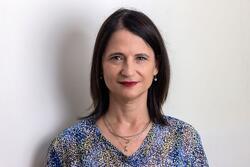Podcast Discussion Guide: Can We Talk? People of the Cookbook
Overview
- Can We Talk? is the podcast of the Jewish Women’s Archive highlighting the voices and stories of Jewish women and the issues that shape their public and private lives.
- Bringing the wisdom of Jewish women, and their voices, into diverse educational settings is an opportunity to enrich the fullness of learners’ understandings of what it means to be a Jew and how our values shape our identities.
- This Discussion Guide for the episode People of the Cookbook can be used in connection with Passover, as well as in explorations of Jewish diversity and diaspora.
Essential Questions
- How do the Jewish women in this episode draw strength from the food-related traditions of their families?
- How do particular foods and recipes tell the story of Jewish diaspora?
- What does it mean to prepare foods with a specific lineage? What is the difference between food that is “fashion” and food that represents culture?
Learning Outcomes
- Learners will understand how Jewish women have enacted Jewish continuity through food preparation and holiday observances.
- Learners will have a richer understanding of Jewish peoplehood through learning about the many Jewish diasporas as represented through food.
- Learners will feel seen and understood in their own identities as foodways are highlighted as authentic expressions of Jewish identity.
Preparation
Recording for Can We Talk? People of the Cookbook available here, as well as some photographs of guest Claudia Roden. Transcript available here.
Educators and facilitators are invited to listen to the episode and read through the transcript prior to the discussion. Segments have been identified below to listen to as a group activity; however, the whole episode is only 15 minutes long, so in some cases you may want to listen to the whole episode.
This discussion guide may also be used alongside a cooking or tasting activity. Depending on your resources, you may want to plan to cook together with learners after this discussion; you might also listen to the podcast and lead an informal discussion during the cooking process.
Consider incorporating the award-winning Book of Jewish Food, which was written by podcast guest Claudia Roden and published in 1996. You can also bring other Jewish cookbooks to an in-person class or discussion.
Text in blue boxes below is framing that educators can adapt as a script. Text in green boxes is taken from the podcast transcript.
Discussion
Introduction to Discussion and Podcast Excerpts
As you welcome learners into the conversation, you may want to offer framing to ground the discussion in Jewish history. Consider preparing maps of the Jewish diaspora for learners who are unfamiliar with the places mentioned below.
“Every cuisine tells a story,” writes Claudia Roden in the Book of Jewish Food. “Jewish food tells the story of an uprooted, migrating people and their vanished worlds.”
Today we will hear about Passover foods and traditions from around the Jewish diaspora from Claudia Roden, a British Jewish woman who was born in Cairo, Egypt, with roots in Syria and Turkey. In her writing and in the excerpts from the podcast that we will listen to today, we will learn about the Jewish diaspora, and how preparing specific foods is one way to transmit our unique Jewish cultures. Kitchens have traditionally been the realm of Jewish women, and these foodways and traditions represent one way that women have both passed on and shaped Jewish ways of knowing and being in the world. The podcast that we will hear today features host Nahanni Rous interviewing Claudia Roden in her home in London, England.
Listen to 2:40 - 5:12
Transcript:
Claudia was born in Cairo in 1936. Her grandparents were from Turkey and Syria. She shows me a framed photograph from the 1890s of a bearded man in a turban and kaftan.
Claudia: This is my great grandfather, who was the chief rabbi of Aleppo. And at that time, Aleppo was good for the Jews.
Nahanni: Claudia’s family still has a key to the synagogue of Aleppo, which is one of the oldest in the world. This winter it was damaged in the crossfire of Syria’s civil war. The last handful of Jews in Aleppo were evacuated last year. But Claudia’s grandparents left over a hundred years ago, for economic reasons. They were traders, and the opening of the Suez Canal had dried up business along the Silk Road. So they went to Cairo. In those days, people were coming to Cairo from all over the Ottoman world.
Claudia: It was a cosmopolitan country, but the Jewish community itself was a mosaic—of people who came from Iraq, from Iran, from Morocco, from Salonika. So we were used to being part of a mixed community. We didn’t see it as mixed, we just see this is how we are.
Nahanni: Claudia grew up speaking French, Italian, English, and Arabic. Some of her happiest childhood memories are of Passover seders…the food, the huge family gathering. She and her cousins giggled at the irony of celebrating the Exodus from Egypt, because they were still living in Egypt, and quite comfortably at the time.
Claudia: For me, it was very happy. Of course it wasn’t so for everyone and it wasn’t so at the end, when things turned sour.
Nahanni: The Suez Canal had drawn Claudia’s grandparents to Egypt, and in the end it was a crisis over the Canal that forced her family out. When President Nasser nationalized the Canal in 1956, England, France, and Israel invaded.
Claudia: In retaliation Nasser threw out the British, the French, and the Jews who didn’t have Egyptian passports.
Nahanni: The government also sent many Jews to internment camps, and seized businesses.
Claudia: There was a lot of fear about what is going to happen to us, so people just said, we’ll go. So they left, and they couldn’t take anything. They could take 50 pounds only, in their pocket.
Explanation and Discussion
For adult and high-school aged learners, you may offer the following framing and then listen to another excerpt. For younger learners, you may want to offer the framing and then move directly into discussion.
Throughout history, so many Jewish people have experienced exactly what Claudia Roden describes about her community in Egypt – they have been forced to leave all of their belongings behind and make a new home – with their cultural practices to sustain them. In so many cases, culture is then transmitted through food – the specific dishes that are made at different times of the year, for holidays and observances, rooted in the diaspora experiences that took place over centuries.
Listen to: 7:30 - 12:20.
Nahanni: Claudia has researched and written about the cuisines of many countries and cultures. How does she decide what makes something a Jewish dish? In many places, Jewish cuisine seems just like the local flavor.
Claudia: The Jews didn’t invent it from nowhere. And so there was the Jewish food of Syria... was Syrian. But because the Jews who were kosher didn’t eat in Muslim homes, their food did develop slightly differently.
Nahanni: Jewish dietary laws prohibit mixing dairy and meat, and eating pork and shellfish. Though Sabbath feasting is practically a requirement, cooking on Shabbat is not allowed. Unique cuisines developed within these restrictions.
Claudia: For instance, in Italy and in France, there is Goose salami, Goose prosciutto. So the substitutes was what made it Jewish.
Nahanni: Also, hybrid foods Jews created when they brought traditions from one place to another and adapted them. For example, Portuguese dishes with Indian flavors in the Jewish cuisine of Cochin, and Baghdadi fish cakes served with chutney for Friday night dinner in Calcutta. And when Jews in India lived under the British Raj, they started making bread pudding.
Claudia: But they were making bread pudding with coconut milk, not with milk, so that they could eat it after a dinner of meat.
Nahanni: It was like fusion cuisine, before such an idea existed.
Claudia: It was a fusion, but it was a fusion that took a big upheaval of populations.
[Music]
Nahanni: An Iraqi friend once gave Claudia his family recipes. She made an innocent mistake and presented them at a conference about Baghdad. The Baghdadi Jews in the audience were in an uproar.
Claudia: No! We don’t eat this. We don’t eat this… from everywhere. I said, Sammy Daniels told me that. “Sammy Daniels is from Mosul!” This herb we never ever use. You see, they were so emotional about a herb.
Nahanni: Claudia tells this story to demonstrate how distinct regional cuisine can be. The Iraqi cities of Baghdad and Mosul each had their own Jewish food. But there’s a ghostlier truth here. Jewish communities flourished in Iraq for more than two thousand years. In the 1920s, Baghdad’s population was a third Jewish...much more Jewish than New York City. Now there are no Jews in Baghdad or Mosul. In the middle of the twentieth century, Jews were forced out of the great Sephardi communities that Claudia writes about: Cairo, Aleppo, Salonika, Tripoli, Fez, and hundreds more. As she says, these are recipes from a vanished world.
[Music]
Claudia: Do you want to spread it? I think maybe with a fork is easier or better…
Nahanni: Ok, and the spinach is going on top?
Claudia: Yeah.
Nahanni: Claudia is coaching me through a Turkish Passover dish called sfongo… it’s a spinach pie that uses mashed potatoes instead of phyllo dough. It’s a simple recipe, unlike a lot of traditional cooking that people, mostly women, did.
Claudia: There was so much effort and a lot of the things took a lot of time. And they wanted to take a lot of time because it showed that they cared and they bothered.
Nahanni: Claudia once met a group of elderly Jewish women in Izmir, Turkey who were eager to put their recipes in her care.
Claudia: They were saying, the young Jewish women now aren’t going to cook like we do anymore. They haven’t got time. We’ve got to write it down because we might be the last ones.
[Music]
Nahanni: Recipes that Claudia helped keep alive are now being cooked in homes and restaurants all over the world… She applauds Israeli chefs who dig into diaspora cuisines to ground their cooking in tradition.
Claudia: If you go and invent just from the air, it’s not a culture, it’s not a civilization. It’s something that changes every week. It’s a fashion. Now in America they want to do not potato latkes, but zucchini latkes! And I say, “Ok, do the zucchini latkes, but we mustn’t forget the potato latkes!” The Jews have this huge, huge culture to draw from, because they were everywhere.
After listening to these excerpts, divide learners into small groups to address the following questions:
Discussion Questions - Adult Learners
- How does food help you connect with your Jewish identity and practice?
- What are some traditional recipes/foods that have been passed down in your family? What are some memories or stories associated with the food(s)?
- How does the preservation of traditional recipes contribute to the continuity of cultural identity within the Jewish diaspora?
- In what ways do culinary traditions adapt to new environments while maintaining their cultural significance?
- How can the act of cooking traditional dishes serve as a form of cultural expression and connection across generations?
Discussion Questions - Grades 9 - 12
- How does food help you connect with your Jewish identity and practice?
- What are some traditional recipes/foods that have been passed down in your family? What are some memories or stories associated with the food(s)?
- How do traditional family recipes help preserve cultural identity over time?
- In what ways do foods evolve when communities migrate, and how do these changes reflect both adaptation and tradition?
- How can preparing and sharing traditional meals strengthen connections to family, history, and heritage?
Discussion Questions - Grades 4 - 8
- What are some of your favorite Jewish foods? What does the food mean to you?
- How do family recipes help keep traditions and culture alive?
- How do foods change when people move to new places, but still stay special to their culture?
- How can cooking food from the past help people feel connected to their family and history?
Closing Circle (Activity)
To conclude this session, let’s think about the ways that our own holiday foods, for Passover as well as other holidays that you might celebrate with your family, become vehicles for memory and continuity.
Let’s each take a moment, and think about one dish that we eat each Passover, and reflect on how it came to be a part of our holiday tradition. How did this food come to be a part of your observances? Where did it come from? Is it something that could only exist now? Was it handed down to you?
The facilitator should guide participants to share their responses. You may also conclude in the following ways:
- Adult learners and High School students can share recipes from their own lives with their classmates. You might compile these into a shared document to make a mini-Passover cookbook for the class.
- Children can draw a picture of their dish, to display in classrooms or learning environments.
Access a Google Docs version of this discussion guide.
This discussion guide was created by Danielle Kranjec and Erez Zobary as part of the Twersky Education Fellowship 2024-2025


